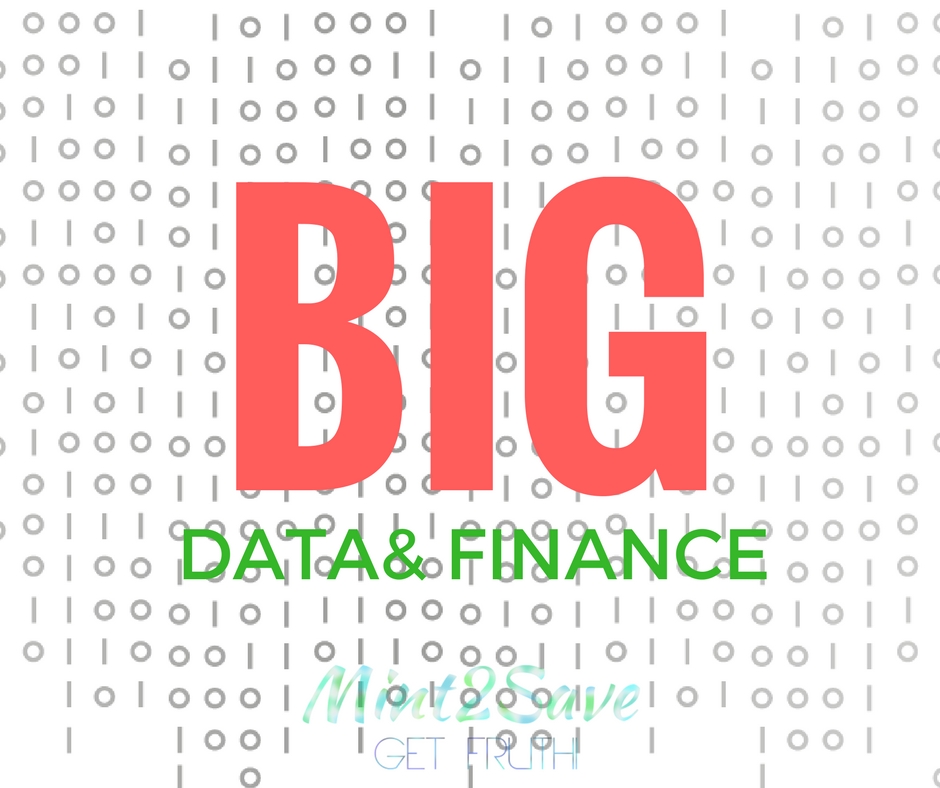How Does Big Data Work in Finance?
- 14 March 2017 | 1660 Views | By Mint2Save

Big data is an emergent trend driving investments in enterprise which comprises set of analytical tools that are geared towards fast meaningful large data sets in today’s financial services marketplace. All financial services firms are leveraging big data to transform their process, their organizations and rapidly, the entire industry. Emerging big data tools provide enterprise with the potential to analyze far greater quantities and types of data in a shorter span of time. For example, both of the structured and unstructured data sets such as text messages, RSS feeds and e-mails can be analyzed to uncover insight. Many technology companies and retailers have already made huge pace in this area, but now the doors are open for the financial services companies to improve, product development, customer segmentation and customer service. There are three defining dimensions of big data i.e. 3V’s Volume, Variety and Velocity. In particular, financial services have broadly adopted big data analytics to take great investment decisions with continuous returns. The continued acceptance of big data will certainly transform the landscape of financial services. However, along with its apparent benefits, significant challenges remain in regards to big data’s ability to capture the mounting volume of data.
Big data has four outstanding features; an enormous amount of information which includes generally more than 10 terabytes of data, fast speed, reliable with the one-second rule in data processing, the diversification that comprise both unstructured data such as images and video and text that is easy to store and realization of value.
Big data widely touches various points of daily life. Like Amazon uses its influential big data analysis to propose a number of goods targeted to consumers based on their perceptions and interests and another, Netflix, before launching its American hit TV show House of Cards used big data to assess the audience’s fast-forward and rerun time and then to determine the perfect combination of director, leading actor, and plot.
There are numerous benefits finance can achieve by big data strategies as it develops methods and services for the valuation of data and extend their role in fulfillment and internal control to the moral and effective stewardship of data assets. Join dissimilar data from a variety of systems designed to meet the diversity across regions regarding language, regulations, currency, time zone, etc. Use big data that provide specialized decision making support. Often in real time and decide when data can most usefully be shared with internal and external stakeholders and monetized as new products or services. Use big data and its associated tools not only to help identify risks in real time and improve forensic accounting abilities, but also help to evaluate the risks and rewards of long-term investment in new products and new markets.
The changes in financial companies due to big data begin in two specific areas. First, where big data, modify the information structure that allows financial institutions to collect and analyze customer data and thus offer more individualized services, a precision marketing. Second is in risk management, where the big data revise the traditional risk management with cloud computing that can encourage the most accurate risk evaluation at the lowest cost. All the financial institutions that carry these data advantages will enjoy increased operational efficiency and business performance.
Big data also involve using various data sources, internally and externally. Social media, geo spatial, voice, video and other unstructured data all play a significant part in knowing the customer today and their future behaviours. For example, top firms are looking at using both internal and external data even both structured and unstructured, to develop personalzsed banking products.
Insurance industry changes brought about by big data analysis that involve factors such as pricing, marketing, R&D, distribution, claims, and service with changes that has already occurred among leading international players. If we talk about banks, the big data plan predominately still revolves around reducing risk, meeting regulatory objectives and improving customer intelligence. As requisite results are recognized, banks and insurance companies should hunt for opportunities to accelerate how they utilize their data to drive optimal value. Like for example, cloud enabled analytic service environment powered by big data technologies can cut down the earlier lengthy technology and business planning cycles. Usually, financial service companies used only transactional data such as deposit data and customer payment, but now they can use the transactional data with interaction data ,such as online, call centres, and even social media data.
In a today’s economic era considered by databases and networks, the meeting of finance and big data seems natural. With the use of big data, the financial industry can gather helpful information in a faster manner, from the infinite resources to support and take correct business decisions, and give more useful precision marketing and risk management to improve business performance, its growth and operational efficiency. Yet, big data brings provides great opportunities, but it also presents new challenges and competition from Internet companies like Alibaba to P2P lenders that enter the sector to dig up opportunities.
“Data really powers everything that we do”









